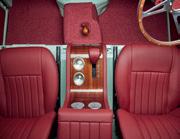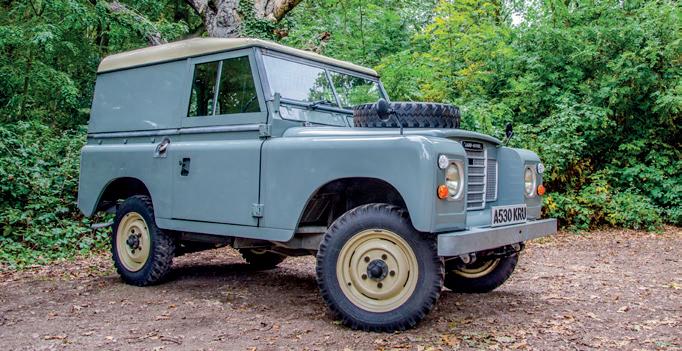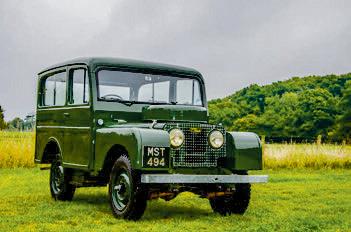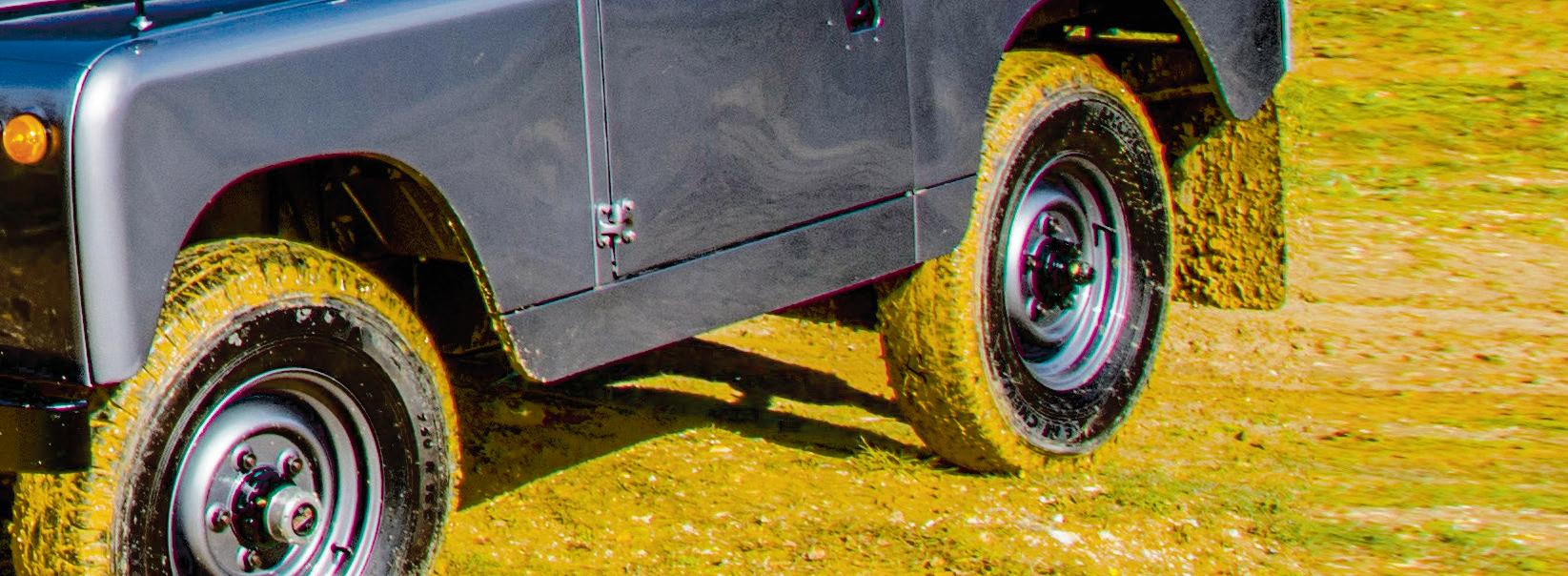






















Terrafirma Trackers 4G GPS
TFPROT01 / TFBAT01
• 24/7 Monitoring
• Real Time Warnings and Immobilization
• Remote Cut Off (Petrol / Power)
• User Friendly Interface
Scan for more info:






















FANCY OWNING A RANGE ROVER
FORMERLY BELONGING TO THE
LATE QUEEN ELIZABETH II? Is so, the good news is that an SDV8 Autobiography LWB fitting that description was recently listed on PistonHeads. The L405 was commissioned by the Royal Household in March 2016 and was used on numerous occasions to chauffeur the late Queen and Duke of Edinburgh to and from their public engagements. It was also chosen to transport former US President and First Lady Barack and Michelle Obama during their state visit to the UK later that same year.
Prior to entering service, the Range Rover was modified by Land Rover’s





Gaydon workshop to suit an exacting brief for Royal duty. Additions included side steps and a police siren – which has since been removed for homologation purposes, though a number of specific features including grab handles, as requested by the Queen on many of her cars, remain in place.
‘To know this was personal transport for the late Queen and Prince Phillip elevates this Range Rover to another plane of specialness entirely, says PistonHeads’ Matt Bird. ‘Knowing that this vehicle was used for the Obamas on a state visit only furthers the appeal. For those enamoured with the Royal family, it’s an unrepeatable and wonderful piece of history.
‘There are few finer ways to travel than in the back of a long-wheelbase Range Rover. They really are unmatched for opulence and sense of occasion, especially when specified like this one with lovely light leather and dark wood. Even the wheels look ideal for sumptuous rolling refinement, and the lusty V8 diesel will be the perfect accompaniment for mile after effortless mile.’
So, how much is this bad boy going to cost you? A right royal £224,850, that’s what. Just to be absolutely clear, you don’t get Windsor Palace thrown in. It was listed on PistonHeads by Bramley Motors and at the time of writing it was, not surprisingly, still for sale.












Land Rover owners who drive in Paris now have to face something even worse than being a Land Rover owner who drives in Paris.
The city’s residents recently voted to approve a 200% increase in parking charges for SUVs, meaning anyone with a qualifying vehicle will now pay €18 an hour for the dubious pleasure of being there.
The vote, which was narrowly passed with a whopping turnout of
5.7%, was called under Parisienne mayor Anne Hidalgo’s campaign of populist environmentalism. Aimed primarily at commuters, it exempts taxis, tradespeople, health workers and people with disabilities, as well as residents of the city – a welcome moment of common sense compared to some of the local anti-vehicle rules introduced in the UK over the last few years.
Opponents of the scheme say many everyday family cars will be caught up
in the city’s attempts to define what an SUV actually is. Withut checking the list, however, you can be pretty sure that any Land Rover worth having will certainly fall foul of the new rules.
On the plus side, if you actually want to drive into Paris you clearly enjoy suffering and misery. So the addition of what amounts to about a £100 a day fine for doing it should make the experience more perversely memorable than ever.




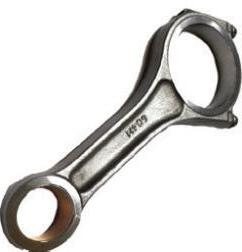










www.thelandy.co.uk
Issue 125: Apr 2024 Buyers Adventure Workshop Products Vehicles News
Insurance industry ‘not using the data’ says Land Rover boss after yet more reports of owners being unable to get cover
Anger over insurance costs for new Land Rovers and Range Rovers continues to rumble on, after JLR boss Adrian Mardell hit out at the media and insurance industry about unfair treatment of the company’s vehicles.
Speaking in early February, after JLR had reported strong financial results for the previous quarter, Mardell said it was ‘a myth’ that Range Rovers are the country’s most frequently stolen vehicle. Apparently referring to reports about the Velar based on DVLA data for 2022-23, he countered that thefts of Range Rovers have fallen 27% last year – and that only 11 vehicles out of a total of 12,800 current fullfat Range Rovers have been stolen.
‘The insurance industry clearly are not using the information and the data,’ said Marfell. ’They are very slow to respond.’
JLR launched its own insurance service during the latter part of 2023, in response to escalating prices quoted for third-party policies. This provided quotes to more than 4000 clients in its first two months of operation, with an average premium of less than £200 per month.
Many insurers also quote inflated premiums for everyday Land Rovers, however these tend to vary wildly – making it essential to shop around. In particular, the golden rule is never to accept a quote for renewal, in particular when it’s significantly higher than you paid the previous year.
It is, however, essential to recognise that original-shape Defenders in particular are extremely appealing to thieves – and very easy for them to steal. A wide variety of security products are available, some generic and some specialised, however the best protection is still to keep them locked away and hidden from view.







To

We’re on Facebook: www.facebook.com/thelandyuk

Something I’ve mentioned before in this column is that in addition to our off-road and Land Rover titles, Assignment Media also publishes the legend that is Custom Car. It’s been going since 1970 and through various incarnations it has evolved into the only UK monthly covering the hot rod scene.
It’s a hell of a scene, too, albeit one populated largely by blokes of a certain age – many of whom have deeply entrenched views on what’s right and what’s wrong in a car. Build something that doesn’t please them and woe betide your social media.
I always find this strange, because the whole point of customising is to create something individual a car whose uniqueness makes it an expression of your own personality. For this to have turned into a government-by-elders dictatorship is, I’m pretty sure, not what the earliest customisers had in mind.
I’m equally sure that the first people to chuck old Series panels on a Range Rover chassis just wanted to build a cool Landy, too. They might not have seen how Land Rover’s own version of the same idea would one day become the basis for countless bespoke builds for the urban rich, but while it might not have made sense I’m certain they’d have seen it as a positive sign that Land Rovers would continue to evolve.
Taste is personal, of course. But class is undeniable, and universal. A good build is a good build, whether or not you would have built it that way yourself.
Hence the Defender 90 you’ll find in this issue. Just a standard looking white Hard-Top from the outside, but with an interior created in the image of a Georgian boot room. I kid you not.

www.thelandy.co.uk
Issue 125: Apr 2024

And you know what? It might be the most beautiful Defender build I’ve ever seen. I have no need for a self-propelled Georgian boot room, but I also have no need for a six-foot sculpture of a man thinking and that didn’t stop me from being blown away by Rodin’s famous sculpture first time I saw it. The point is that like all the best art, it’s an unfettered expression of something from within. And, as with the hot rod scene, ‘art’ is absolutely what a good Land Rover is. Alan Kidd, Group Editor alan.kidd@assignment-media.co.uk



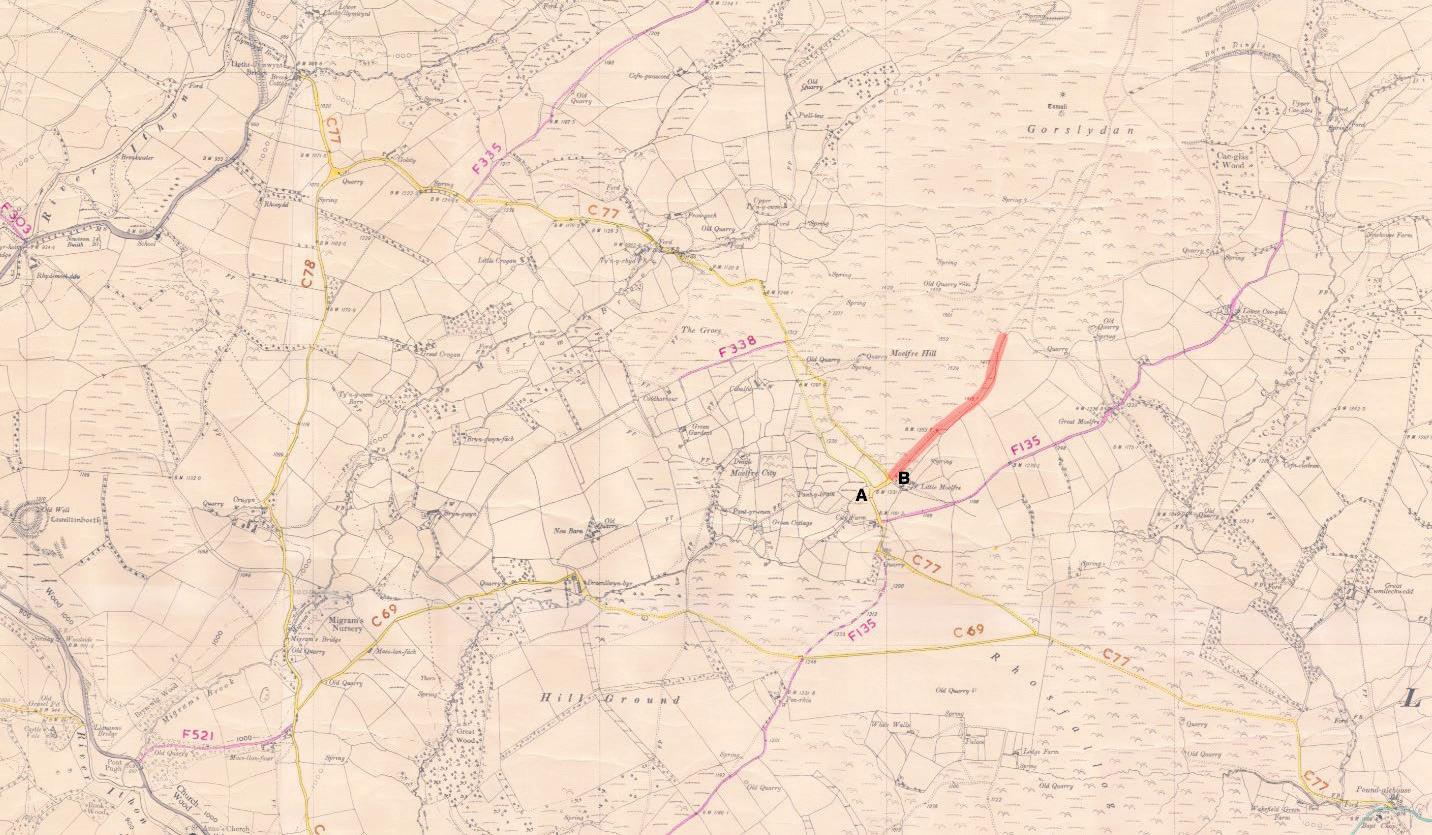
LITTLE MOELFRE IS A LONG BYWAY, AT AROUND 4.5 MILES, MAKING IT PARTICULARLY PRECIOUS. However a series of conflicting records threatened to turn it into a cul-de-sac.





route was never adopted and did not appear on either the Definitive Map and Statement (DMS) or Highways mapping.

Ahugestockover2800m2

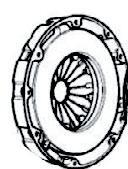




Looking at the map, the byway appeared to stop short of its junction with the C-class (yellow) road at Moelfre City. However the Definitive Map Statement said it commenced at the C road – and a List of Streets (LOS) map from 1952 showed it doing exactly that. In addition, but the Crown Estate and a previous landowner had made written depositions stating that it was a public road.
The problem stemmed from around 1955, when the road was diverted – meaning it bypassed the point previously recorded as the end of the byway (point B on the 1952 LOS map shown here). For whatever reason, even though it was tarred and shown on updated maps, the new

Established1985 www.land-service.com
In April 2016, the new landowner put a fence across the route –provoking a storm of complaints. They threatened to sue Powys County Council if the new route was added to the List of Streets. What followed was a series of legal wranglings which finally yielded some sort of common sense last year when the landowner made a Without Prejudice offer to allow users to install a gate.
Since then, ‘Private Keep Out’ signs have been replaced by new ones reading ‘Enter At Own Risk.’
Then on 28 October, members of the Green Lane Association took up the landowner’s offer and installed a gate, meaning the byway can once again be used as the through route it surely ought to be.
PIPEHOUSE LANE, A BYWAY SOUTH OF BATH WHICH WAS REPAIRED AS RECENTLY AS JANUARY 2022, needed another round of work at the start of this year after being badly damaged during the repeated storms that battered the country during the autumn.
At the time of writing, the lane was closed by a TRO to allow work to be done. Bath and North East Somerset Council only expected this to take a week, however, so the restriction should have been relaxed by the time you read this.
Elsewhere in Somerset, Green Lane Association rep Charlie Moore has been busy surveying lanes for required clearance work. Some in the area have had this done in the relatively recent past (eg Chillyhill Lane near Chew Magna and Nanny Hurn’s Lane near Bishop Sutton), while others (such as Featherbed Lane, also near Bishop Sutton) have been neglected long-term, and Charlie is hoping to get a group of volunteers together to improve the situation. ‘My aim is to have a network of lanes that are non-scratchy and so suitable for all,’ he says, and what a very laudable aim it is.

This might not have been a victory, but a truce allowing both sides to get on with their lives is vastly preferable to the angst-ridden stalemate that went before. Naturally, the fragile situation means users need to be at their diplomatic best on Little Moelfre, not least because the ramp up to the gate still needs to be stabilised. As a result, GLASS asks all 4x4 users not to drive the route until spring.



‘’Insa Eco offer a comprehensive range of recycled 4x4 tyres to suit all requirements. Manufactured in a highly advanced European tyre facility, using the most stringent quality control procedures, all products meet the highest industry certification standards.



Insa Eco renew tyres providing an ecological, economical and safe solution in today’s world, retreading saves energy and avoids pollution. For more informat ion and to find your local Insa Eco Stockist please visit:



















www.4site4x4tyres.co.uk






IF YOU’VE GOT A CURRENT-SHAPE DEFENDER 110 OR 130, you probably use it mainly (or indeed exclusively) as a family car. Which has the potential to give you a lovely, relaxing time as you stand there watching while the oldest and youngest generations of the family in question struggle to get in and out while you nervously try to cover for them.

The problem is of course that it’s such a long way up. Hence these side steps from Safety Devices, which are designed to pick up on existing mounts in the sill for easy fitment.
The sills are supplied with an adapter to allow the OEM jack to be used, and the kit contains both side steps and toe rails as well as non-slip tape and stainless steel infill plates. The vehicle’s plastic sill covers will require slight modification to allow access to the mounting points.





















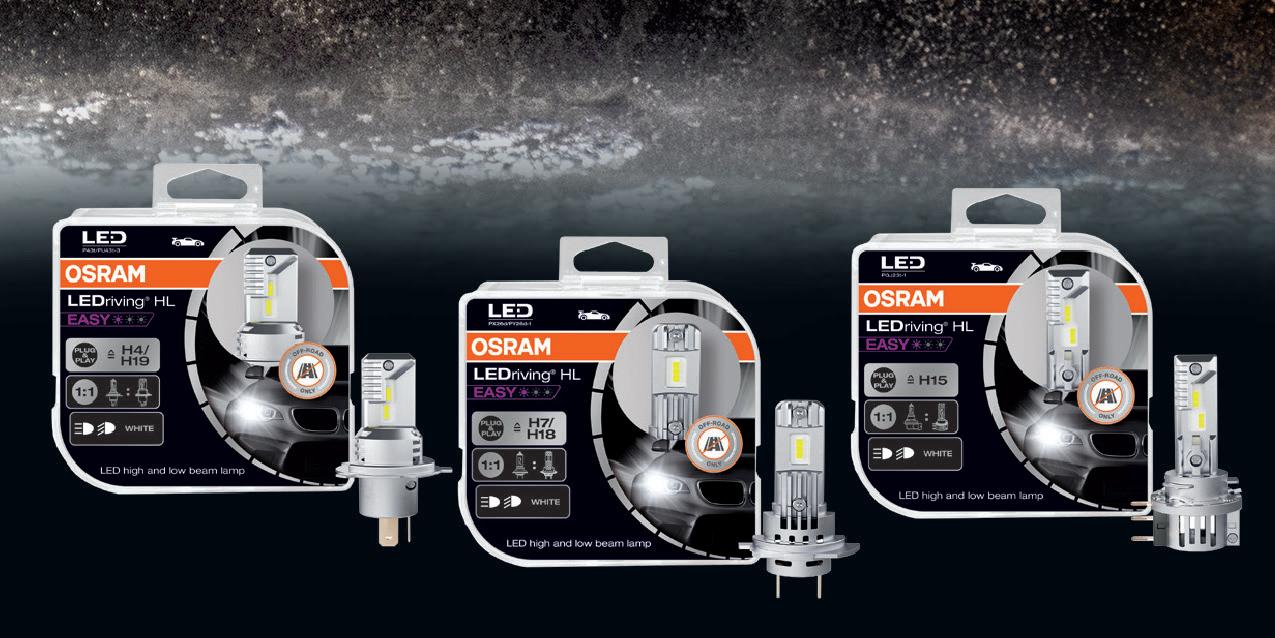














local store at www.caarparts.co.uk





www.thelandy.co.uk

Price: £288.25 and £587.50
From: maltings4x4store.co.uk, SKU DA3569 and DA3570
SAFETY DEVICES’ SPARE WHEEL MOUNTS FOR THE NEW-SHAPE DEFENDER are designed to work with the existing carrier, providing a cradle on which to rest the wheel while attaching it with bolts. It uses the existing mounts in the rear door, with no modifications to the vehicle required.

Suitable for the Defender 90, 110 and 130, the mounts are available in basic form (DA3569) and combined with a mount for a high-lift jack (DA3570). The latter adds the provision for a jack, holding it in a vertical position.

Both units are available from Maltings 4x4, which as always says that if you can find it cheaper somewhere else, you should give them a call.
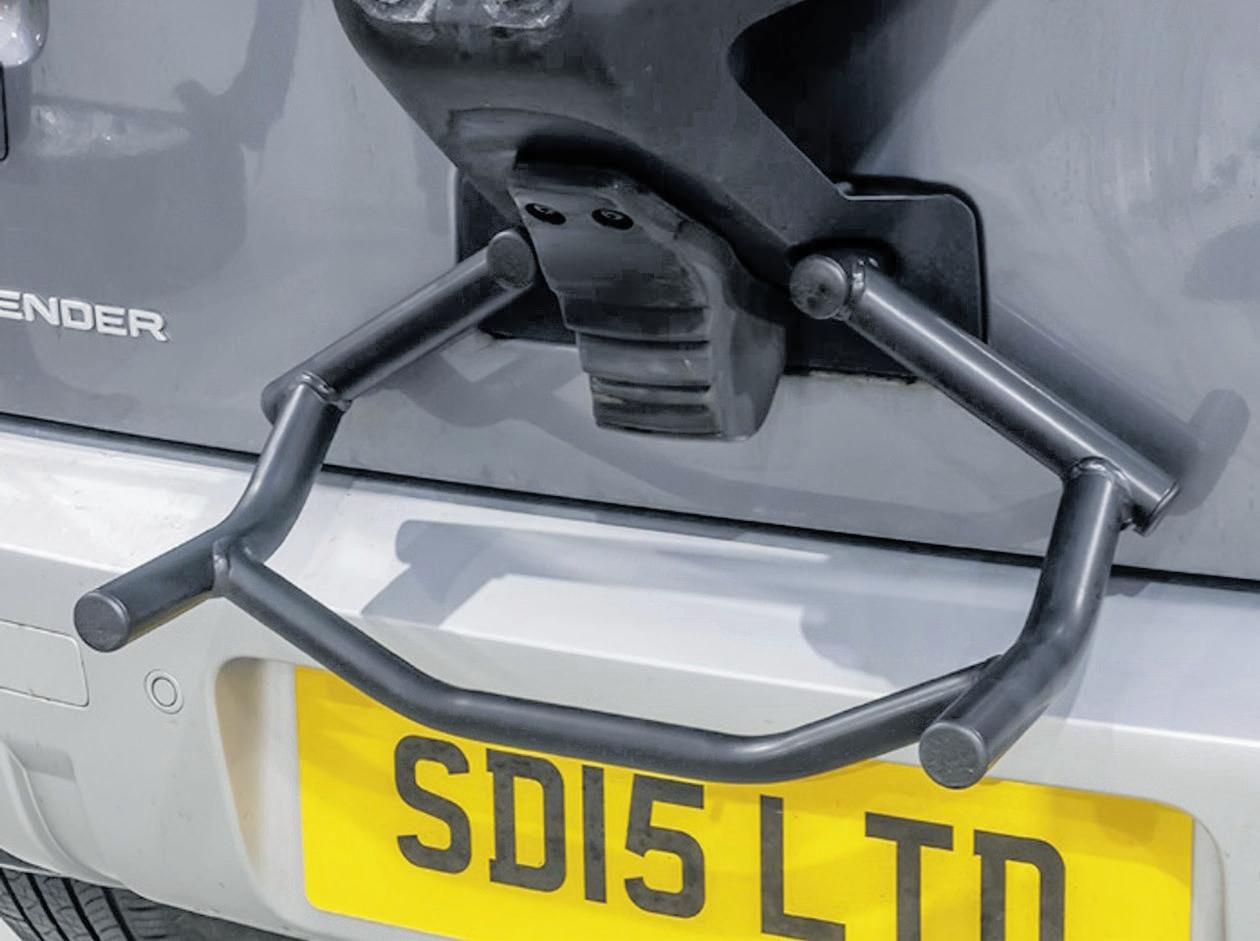

Price: TBC From: www.designdevelopmenteng.co.uk
THE HEATER CONTROL VALVE USED ON THE PUMA-ERA DEFENDER WORKS PERFECTLY WELL. But it’s made of plastic and the vehicles are now of an age where failures and leakages are being reported frequently enough for Design and Development Engineering to bring out a replacement in aluminium. Possibly not the sexiest accessory you’ll ever buy, but a proper fit-and-forget upgrade that goes hand in hand with any other attempts you might be making to future-proof your truck.
If you do want sexy accessories, of course, Design and Development Engineering is more than a little capable of dishing these up.
The upgraded axles it’s recently been prototyping for Series trucks, for example, need to be seen to be believed. At the time of writing, the Puma heater control valve is still on its way, with a due date of early 2024, so the price is still to be confirmed, but we’re fairly sure they wouldn’t mind if you want to get in touch with a pre-order.









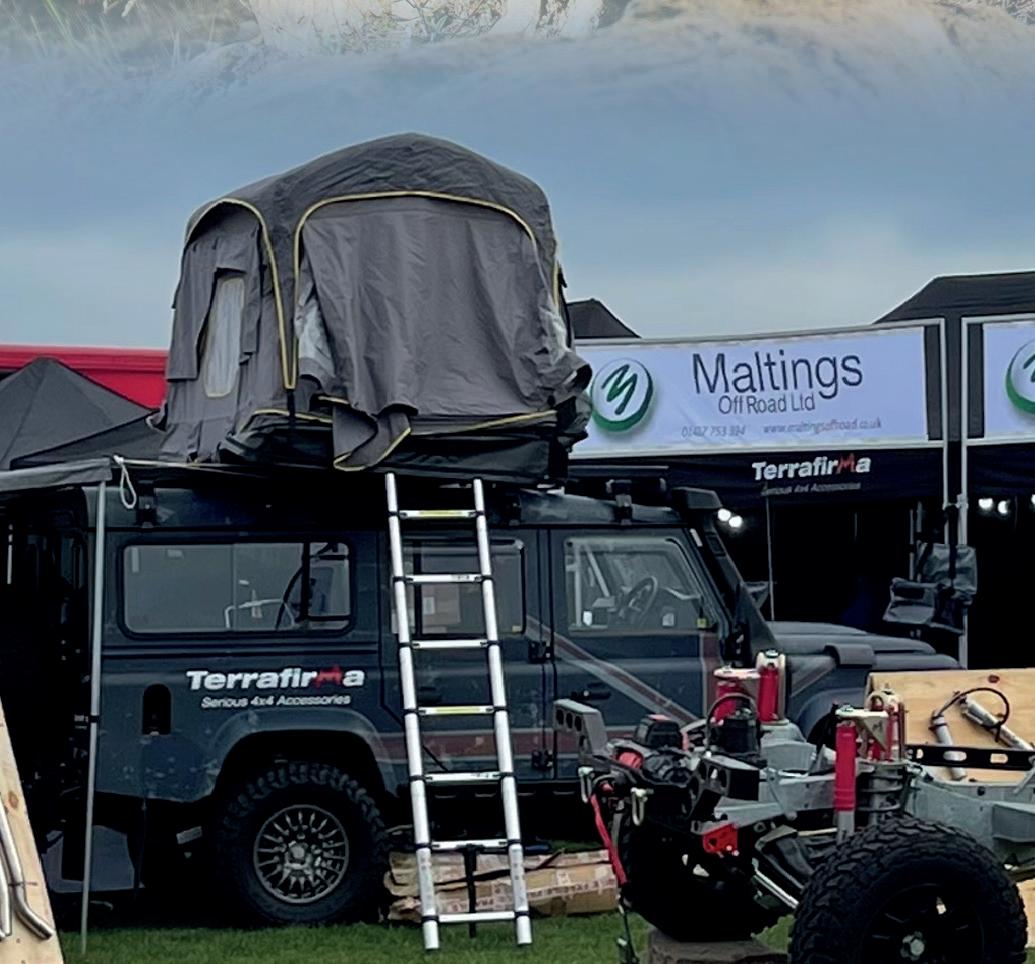











































Land Rovers are returning to Shepton Mallet this April for a Spring weekend filled with Land Rovers. Take your 4x4 around the Off-Road Course with the AWDC, camp over and enjoy drinks and food with old friends.
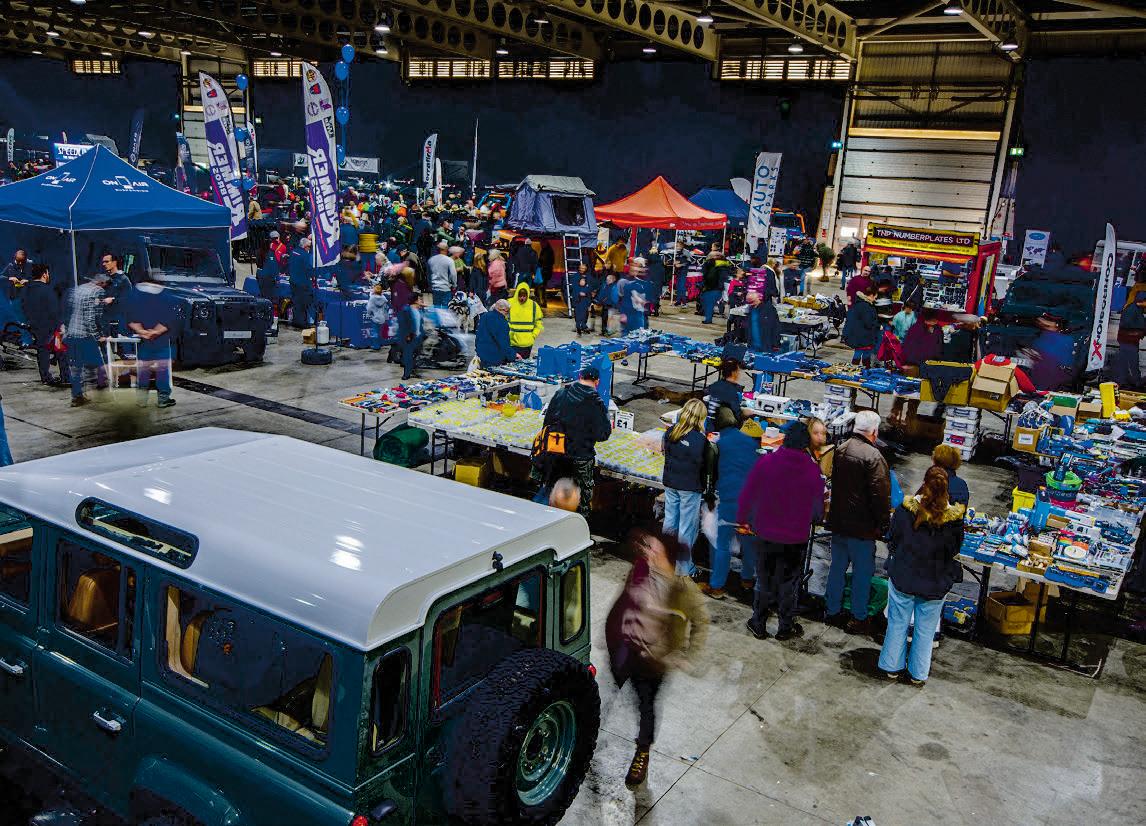


See website for more details and to buy tickets!
Exhibitors old and new will join us, selling everything from parts & accessories to tyres, clothing and toys Talk to overland adventure specialists about your next trip, discuss modification options with companies with the know-how and other experienced Land Rover owners. #GBLRS2024

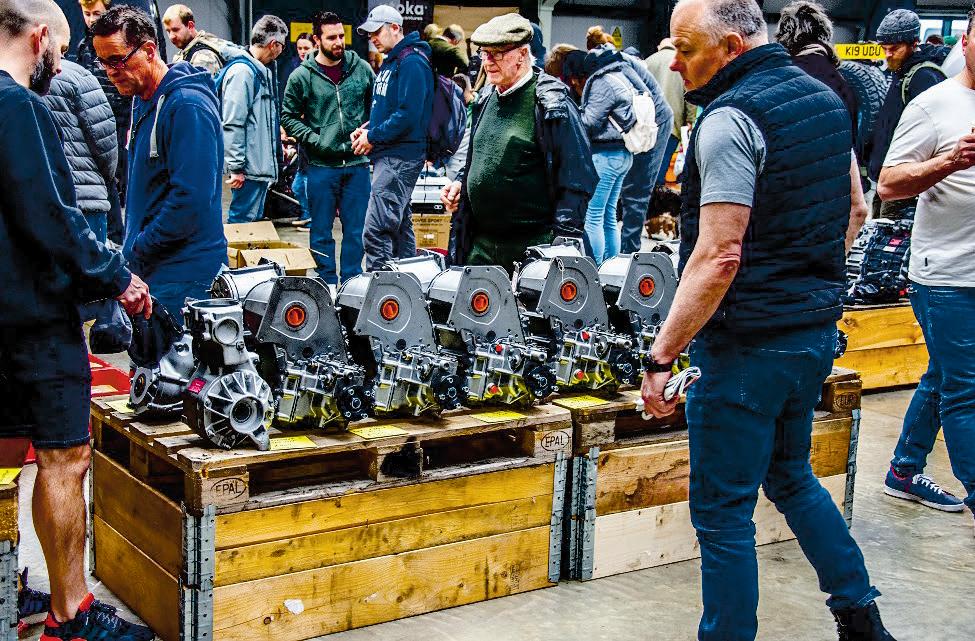















To advertise in The Landy, call our team on 01283 553244

We’re on Facebook: www.facebook.com/thelandyuk

And now the company is offering a trio of its own Land
 Words: Gary Martin
Pictures: Masai 4x4
Words: Gary Martin
Pictures: Masai 4x4

Staffordshire-based Land Rover accessories specialist Masai 4x4 is well known for the unique products it designs – and for building eye-catching vehicles to demonstrate them. A number of these trucks have appeared in these pages in the past –and now the company is offering three of them for sale.
These include a Td5 Double-Cab, a repowered early Tdi and, surely the jewel in the crown, a genuine 50th Anniversary 90. The latter has been refurbished in Masai’s own workshop, where it gained a few sympathetic enhancements to improve the driving experience without detracting from its original character.
Registered in 1999, the 4.0-litre V8 auto is one of the 385 made for the UK market. Masai has fitted it with a new chassis and treated its panels to a full
strip down and respray in the correct Atlantis Blue.
Inside, the 90 has been fitted with a full sound deadening kit as well as new carpets and seats. The speakers have been upgraded, with Alpine tweeters added to the system to enhance their sound. Though talking of sound, it’s the Rover V8 that provides the sort of soundtrack you really want, with a tune-up and new valves and injectors helping it run sweetly.
Having done just 79,357 miles, Masai promises that the 90 is ‘a beautiful example of a rare car and a future collectible likely to only increase in value’ and ‘a unique opportunity to own a piece of Land Rover motoring history.’ A £55,000 price tag does reflect this, but when it comes to 50th Anniversary 90s plenty of people have paid more to get less.
If less is more, though, check out the mileage on Masai’s 300Tdi 110 HardTop. Supported by a long list of MOT tickets, it’s showing just 22,125 – barely run in for one of these engines.
It’s not the original lump, though, as the truck dates from 1989. It’s actually a very early Defender-badged Defender, having started life as a 200Tdi before being stripped down and reconditioned, complete with the later engine, in the Masai workshop.
A Hard-Top with three seats (two plus the occasional centre seat up front), the 110 looks extremely sharp in a new coat of Grasmere Green and with a personal plate it would easily pass for a much more recent one. You might well decide that it doesn’t matter. All its lights have been upgraded to LEDs, with Lynx headlamp units, and elsewhere around it you’ll see Masai’s


DRL front bumper, A-bar, steering guard, light guards and Fire and Ice side steps. Further kit includes a Cargo Bear roof rack, NAS rear step, Exmoor door handles, Optimill door hinges and Masai’s own dark tinted rear glass.
Inside, the entire floor has been carpeted and the seats are trimmed in Masai’s own Flute Tan covers. There’s an upgraded head unit in place, too –and to help you hear it on the move, the roof, floors and bonnet have all been sound-deadened using Dynamat. A less obvious but equally effective way to quieten down the vehicle is to be found in the transfer case, too, which has been rebuilt using Discovery gears – whose lower ratios allow the engine to run more quietly on the motorway. The head unit runs a reversing camera, too, for a different kind of relaxing experience behind the wheel.
As you’d expect from a Defender with such a low mileage, even on a repowered engine, this too is a premium purchase on the used market. Masai are asking £39,999 for it – which someone already met before not being able to complete the deal, so if you fancy it and you reckon the deal’s right you might not want to sit on your hands. The guys at Masai point out that it would be the perfect basis for a camper conversion, which might get the cogs turning in your head…
Competing the trio is a 2002 Defender 110 Td5 Double-Cab – which we featured in these very pages two or three years back. Originally built to be a demonstrator for a wide range of Masai 4x4 products, it has been totally restored inside and out – resulting in what the company calls a ‘one-of-akind’ Land Rover.



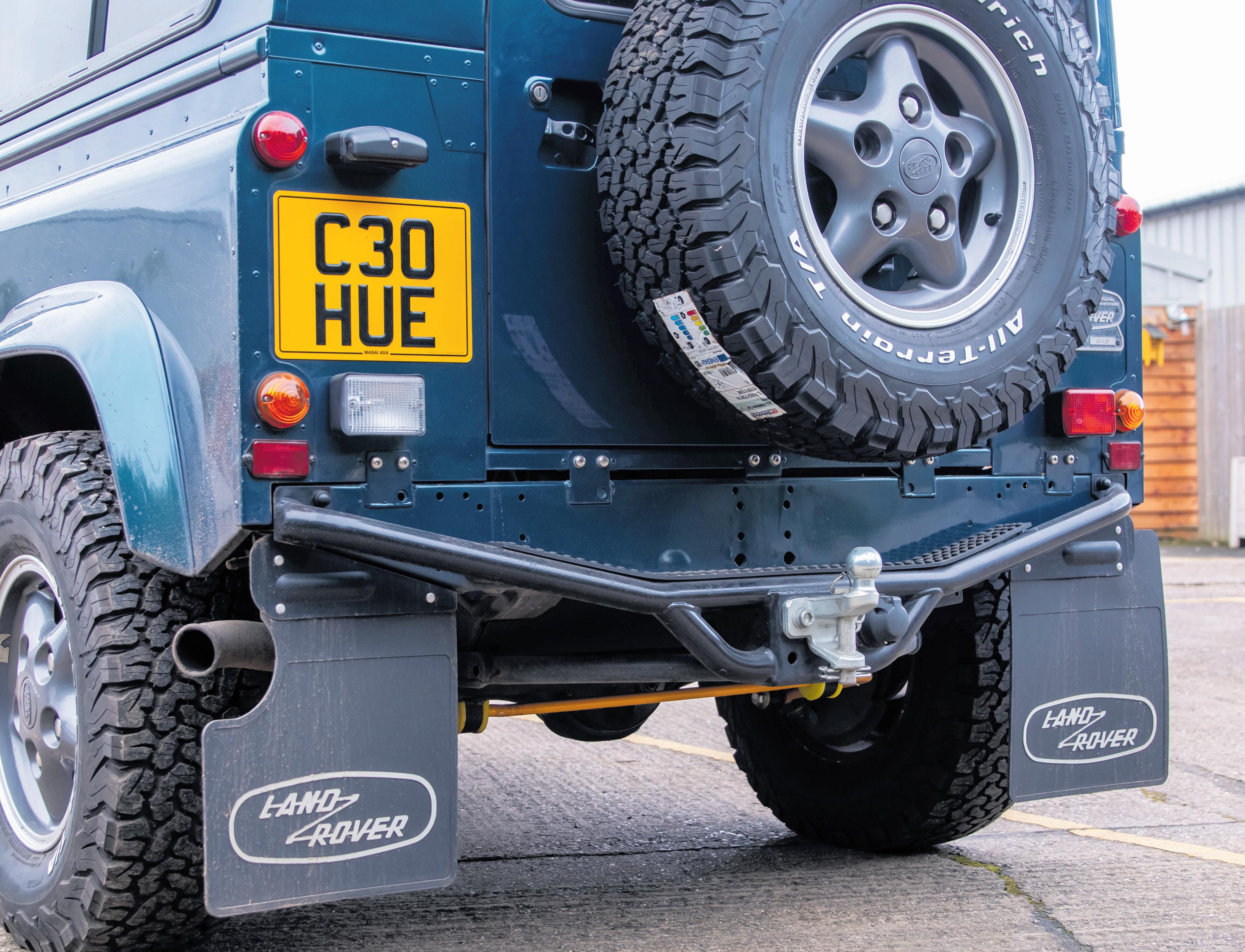









the windows and seals were replaced.
As were the doors, which is always the sign of someone who knows what they’re doing.
It’s all held up by a full new suspension set-up including springs, shocks





and bushes, which won’t do any harm to the way the truck drives, and once again a full set of Dynamat blankets won’t do any harm to the way it sounds.
Up top, there’s a roof rack supporting an ARB Awning and light kit, which sounds like the start of something big.
All that is just the beginning, though.
As we mentioned, this is a former Masai demonstrator – and it was used for product development, too. That’s why it boasts a completely unique feature in the shape of a global electric window control module which allows the buttons at the front to operate the front and rear windows alike. Masai developed this itself – the unit on the 110 is the prototype.
Elsewhere in the cabin, you’ll find Masai’s suede headlining, wool carpets and, on the seats, cream leatherette covers with black piping. Then there’s billet aluminium trim on the gearstick, transfer lever, air vents and slots, door handles, seat adjusters, fuse box screws, fan controls, headlamp switches and column stalk ends. The stereo has been upgraded using a JVC double-DIN conversion kit, yielding a more modern unit with Bluetooth,
hand-free and a reversing camera – as well as surround sound speakers and a Pioneer sub-woofer to enhance the sound quality you get from it.
On the outside, all the lights have been replaced with LEDs and the headlights are Lynx units. But it’s not all about the looks and luxury, with a clutch servo upgrade to aid gearchanges in the R380 box.
This all helps turn a 156,500-mile, four-owner Td5 into what is a very plush Defender 110 with a whole host of individual features. It’s not every day that you see something like this on the market, says Masai, which has it up for sale at £37,000.
So. A 50th Anniversary 90, a low-mileage 110 Hard-Top or a Double-Cab with more extras than you can count? All refurbished, all improved and all still full of their original character. You could get all three for the price of a below-average new Range Rover, but assuming you’re just in the market for one they’re all very different – and each has its own appeal. If you’re interested in one of them, Masai asks you not to buy via its website but to call for a chat on 01543 254507.
The leading supplier of BWI products for JLR applications in Europe.

Designed to survive extreme off-road conditions while simultaneously providing extreme comfort.





LARGEST STOCKIST
GREATEST RANGE BEST AVAILABILITY
BUILT TO OE SPECIFICATION




THE WORLDS BEST ACCESSORIES FOR LAND ROVER
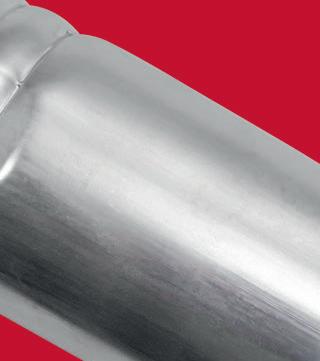







While every Defender is unique, in a world of off-the-shelf individuality it’s not every day you see one that truly stands out. This late Td5 90, however, looks standard from the outside – but in the cabin, its builder Ashley Russell has created one of the very best Land Rovers we’ve ever seen

IWords: Olly Sack
Pictures: Ashley Russell

built this truck for my life,’ says Ashley Russell. ‘But life had different ideas.’ A somewhat sobering introduction to the story of a very, very special 2006 Defender 90 Hard-Top, but who among us hasn’t at some time had to make a painful decision about a much-loved Land Rover?
In Ashley’s case, it was simply a change of circumstances. Which could mean many different things, and it’s not well to pry, but we’re fairly sure the circumstances didn’t involve him going from being a guy who loves Land Rovers to one who wants to drive an Audi instead. When it’s in you, it’s in you.
And Ashley definitely had it in him. The 90 he got down to work on was by no means an old nail – it had started getting tugged for things like perished tyres, thinning brake discs, worn shock bushes and leaking swivels, but there was no one big MOT failure that said it was time for action. It had only covered about 4500 miles a year during its life, too, so said life had barely begun. A perfect Defender to restore into the truck of your dreams, for sure.
And that’s what he did – with help from a list of suppliers whose names read like a roll call in the Defender Hall of Fame. Retro Works of Kelso in the Scottish Borders, for example, were his go-to guys for ‘fast fixes and every little piece I drew blanks on.’ Which was quite a lot, by the sounds of it. ‘James can find that tiny little special bolt that seems impossible. Without him it would have been a different story for sure.’
Even after Ashley had restored it and subsequently found himself no longer
able to keep the relationship alive, the 90 had only covered 76,000 miles. Not much in the lifetime of a Defender, so long as you don’t include the rear chassis which had done the usual thing. Rather than just do the crossmember, he opted for a galvanised rear 1/3 chassis – an early indication that he wasn’t planning on doing anything by halves. Having done that, he shot it full of wax to help keep it solid for decades to come.
That same approach can be seen in the renewal work on the 90’s suspension and running gear. Basically, if it wasn’t pukka it wasn’t going on. Standard-height Eibach comfort springs hold it up, controlled by Fox shocks and poly bushes, and a Bilstein performance steering damper adds a bit of zest to the handling.
All this was entrusted to another Scottish outfit, Engine 701, which trades out of a fabulously situated workshop in Port Edgar Marina on the edge of South Queensferry – literally in the shadow of the old and new Forth Road Bridges. ‘Engine 701 did all my other Land Rovers before this one,’ explains Ashley. ‘With this build, they designed all the suspension, roll bars, wheels, brakes, shocks – all the heavy lifting. Doug knows me well and just knows what I want without words.’
As this suggests, a visit to Engine 701 is not like going to your typical spanner place. ‘The last time I was there, Doug and boy wonder Ben had build and designed a new waiting room with booths and banquettes to sit in, have a coffee and work out the

scheme. Also they do a super cool stash of accessories. Its like going to your favourite bar!’
Interestingly, though Engine 701 did the design work is was Vanstones, an independent Landy specialist in Launceston, Devon, that installed it. A bit more local and another company that gets a huge thumbs-up from Ashley.
‘Vanstones were my absolute go-to for everything else,’ he says.
The twins, Dave and Rob, go to extraordinary lengths to constantly go above and beyond a high bar. They all have hearts of gold. Last time I was there, there were 15 mechanics all working away on Defenders in a massive hanger and paint room where
Uncle Sean lives and who welds and sprays. Darren, non twin, is to be found in a cupboard in front of a twin bar electric heater arranging MOT’s. Dave could make anything just spring back to life and Rob sorts out all the parts but does also get under the bonnets. Dave single handidly rescued a disastrous stereo instal I had had. No fuss, no



finger pointing, just did it proper. Six beautiful tweed-encased speakers to read books to me on journeys. Vanstones in the end took over the whole mechanical side, and the best thing… they have a courtesy car! A Honda Jazz which reminds me always that you can have fun in any car.’
Talking of things that are exciting and new, the Td5 engine was warmed up by a Stage 2 remap and Ultimate intercooler from Alive – which also fitted a silicone hose kit, EGR delete and highflow air filter. The engine is running Alive’s rad and intercooler hoses, too, and it breathes out through an exhaust from Demand Engineering.
So this is on the quick side for a 90, and it’s got the dynamics to match. But one thing it’s not is showy. In fact the restraint in its appearance is remarkable – it sits on standard height (265/75R16) tyres, which are mounted on steel rims with a slightly higher offset to add an inch or two to the vehicle’s track, but that aside you could be looking at any old 2006 Hard-Top. In fact, the only thing distinguishing it from a run-of-the-mill site motor is that it’s clean as a whistle and not covered in scratches and dents.
That’s how it looks from the outside. Open a door – any door will do – and you instantly see that as well as being a bit of a street sleeper, the 90 is also a bling sleeper.
Yes, of course that’s a thing. Well, it is now.
What we mean is that it looks so plain from the outside, nobody expects what’s coming to them when they peek inside. Ashley says it was ‘inspired by a Georgian boot room, with hooks, boxes and generous space for it all,’ which sounds anything from ingenious to pretentious depending on your level of cynicism but, however jaded a Landy watcher you might be, can hardly help

Seats were trimmed by Adam Smith at Stitchsmith – who also contributed the full panel you see behind them. The mango wood cubby box is the work of Ty Worthington at Built Motor Works, who happens to be a trained cabinet maker as well as everything else. Below, one of the very best things about the 90 is that despite its show-stopping interior, from the outside it’s basically just a white van
but spin your head with both its style and the quality of its execution alike.
It’s quirky (boy, it’s quirky) but in a world where people try to buy individuality by ordering products off a page it’s an object lesson in what it takes to be truly unique. Wood, leather and premium textiles are all familiar materials in the premium Defender market – but hand-crafted antique wood and reclaimed timber? This one is special, in every good sense of the word.
The seats are trimmed in a thick, oatmeal-coloured woven fabric with contrasting brown leather side bolsters from Adam Smith at Stitchsmith, creating an effect that’s tremendously classy but also convincingly vintage. There’s heavy-duty medium brown carpeting by Martrim around the seat boxes, too – yet the floors and tranny tunnel are clad in the rubber and vinyl of a true hose-out Land Rover. Up top, there’s a warm brown wool headliner, also from Martrim, and the visors match the seat fabric – as does the surround for a media screen on the dash provided by an Alpine iLX 705D system running Apple CarPlay and pumping out tunes through a set of JL Audio speakers.
While it’s normal for bling Defenders to be full of stainless metalwork inside, the dash hardware, speaker rings and gear and transfer knobs are all in a bespoke anodised finish from Croytec, giving them a warm golden hue that fits perfectly with the ambience of the interior.
And we’re just scratching the surface with that lot. The cubby box, for example, was hand-made from mango wood by Ty Worthington at Built Motor Works (formerly known as Cruxworx), a trained cabinet maker who also contributed no end of ideas about under-floor stowage and battery charging systems.
Look at the details here and you’ll see that this too is the work of a true craftsman, with what looks like a leather skiver on each side and insets trimmed in that same oatmeal cloth – again by Adam at Stitchsmith. The amount of time that’s gone into making it is more reminiscent of the custom car scene than what we’re used to seeing on Land Rovers.
Behind the seats and cubby, the bulkhead isn’t made of wood – you’d like to think the MOT man would raise a concerned paw at that – but it’s clad






www.fourplus4-leeds.co.uk

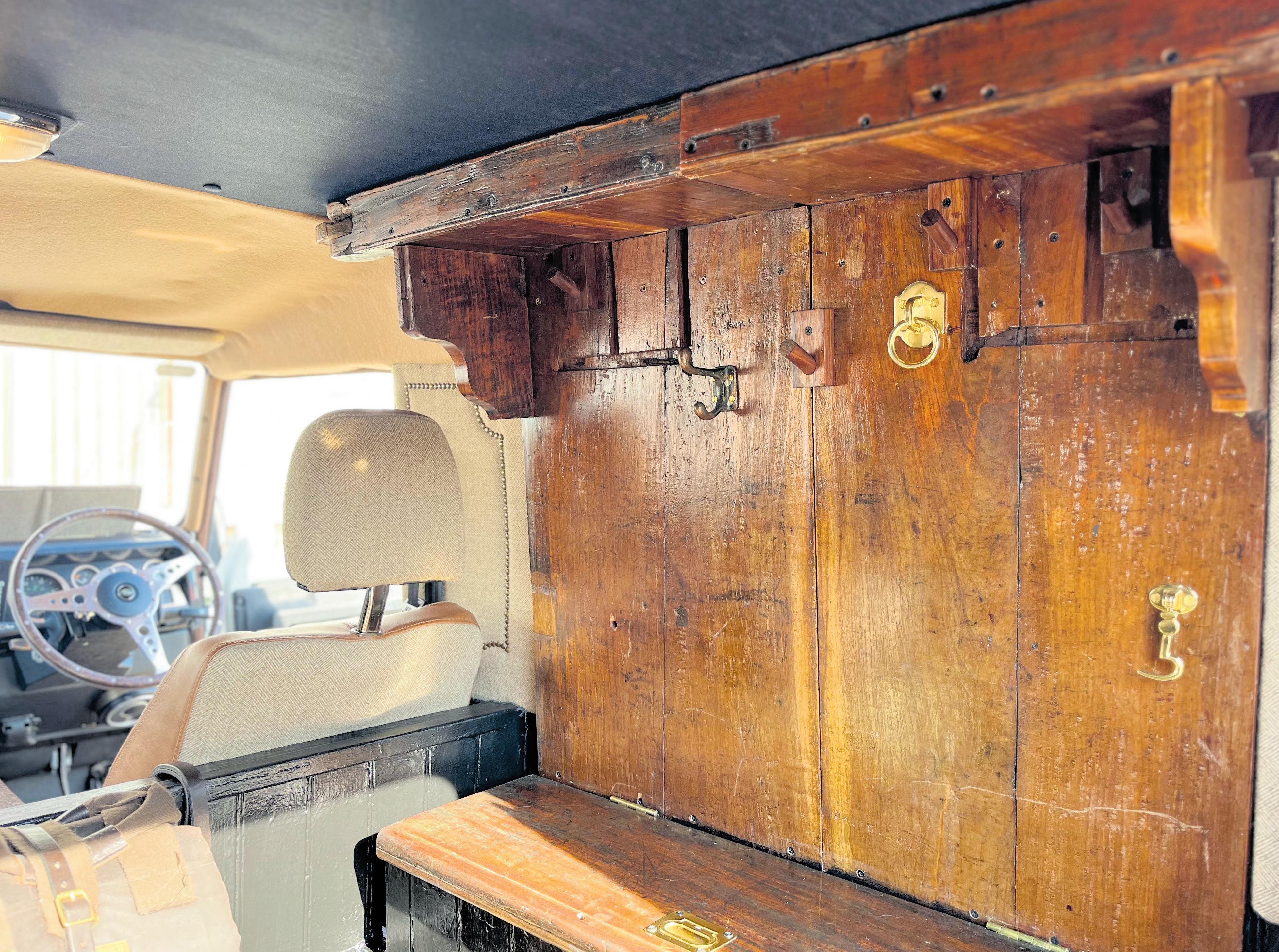


and topped in dark stained panelling which then extends along the sides of the wheel boxes and above them to create storage bins. There’s even a matching skirting board running along the bottom, with a woven oatmeal coir carpet perfectly fitted to match up to it. Straps attached to the bulkhead hold a rolled-up blanket in place, and ahead of it the cubby has brass cupholders inserted into its top surface.
Back behind the bulkhead, a vintage hamper and Fortnum and Mason bag are attached using more leather straps. It all comes across as a wonderful work of whimsy – yet it’s also beautifully practical, if Ashley wants it to be.
But the best is yet to come. And when we say ‘the best,’ we’re not just chucking words around. We’ve seen many Land Rovers with all sorts of interiors, from high-tech to did-you-getthat-leather-from-a-brothel, and some make you want to cry they’re so beautiful while others make you want to weep for whoever thought it was a good idea. At best, the treatments we’ve seen can be phenomenal.
But we think we might have seen our favourite ever here. It’s clever, it’s classy, it’s elegant and most of all it’s so, so creative.
To the sides of the seats, where the belts are mounted, more the woven oatmeal fabric is decorated using domed brass nail pins, creating an effect that’s fabulously retro – perfectly creating the Georgian image he was going for. It’s there on both sides of the vehicle – however on the passenger’s side, it continues back the whole way along the side panel.
Once again, this was the work of Adam Smith. ‘The idea came from future proofing a single bed to run along the side to the passenger’s seat,’ explains Ashley. ‘But in the end it looked so lovely I just left it.’
And it does, too. We’re rarely seen anything as wonderful inside a Defender – and if we have it’s on the opposite side of the vehicle, where mango wood
has been crafted into a hand-made Welsh dresser with pegs and hooks for bags, coats, hats and so on.
Honestly. It’s a Welsh dresser. In a Defender 90.
‘Adam Guinness from G Force did this for me,’ says Ashley. ‘The donor furniture broke his heart and he did actually call me a vandal. It was an organic process done over a weekend but, with both of us being creative, it can get a little heated. But we always make up. Friends like Adam are impossible to find.’
If you’re a hardcore cabinetmaking obsessive, you might look at this and tut because you can see screw heads in its top rail. If you’re normal, though, you’ll just adore it for being so utterly imaginative and, indeed, so utterly, utterly right. We were gazing at it so much we almost didn’t notice the denim headliner on the roof above.
Ashley says that no expense was spared on his 90. While we have no doubt that this is true, though, it’s something you could say about all sorts of Land Rovers – some of which, however good they might be, have all the individuality of a brick in a harbour wall. And there certainly are a lot of bought-in products on show here – but what makes this one stand out is the thought that went into creating it. The build had a theme, and that theme was followed through fastidiously to achieve something absolutely unique and supremely cool.
Car manufacturers like to talk about ‘craftsmanship’ when they mean someone operating a copy machine, and we all know one that trots out the word ‘curated’ ad nauseam to describe common-or-garden options packs. But if you want to see a Land Rover that displays what both truly mean, you’re looking at it.
For something so personal to be anything other than its maker’s car for life seems wrong somehow, but as Ashley says life does have that bad habit of getting in the way of your best-
laid plans. Which brings the story of this phenomenal Defender to a slightly wistful conclusion.
Wistful, but not without at least a bit of a silver lining. The 90 may have gone to a new home, but it was a good one. ‘It went to a lovely fella, actually, who was a gentle Landy newbie and a man who I instantly liked,’ says Ashley. Which is all you can hope for, really, when you sell something that means so much to you.
‘He fell in love. I actually think that it’s going to be his for life.’
So there’s a guy out there who hasn’t had a Land Rover before and now he’s got one of the best we’ve ever seen. It’s a bit like never having been to an art gallery before, but then you decide to see what it’s all about and next thing you know you’re coming home with a Picasso. We’re pretty sure that in order to have taken it on, the 90’s new owner
can hardly help but be the sort of person who understands what he’s got. In this world of off-the-peg individuality, truly creative Defender builds don’t come along all that often. When they do, it takes a good eye to spot them – and an even better one to have imagined them in the first place. Let’s hope life’s plan includes Ashley being able to embark on more Land Rover projects in the future. They’ll certainly be worth watching.


















Call 0800 587 5480 or visit
Authorised










With the Series I market having become flooded recently, if you’re looking for something that stands out in a crowd the Series II and IIA are trucks whose time has come. They have all the charm of the original
Land Rover – but have managed not to be tainted to the same extent by the craze for millionaire-money restorations.
It’s incredibly rare, for example, to see a Series I still being used as a Land Rover. Obviously it’s still pretty unusual with Series IIs, but when you do see
one in action it somehow doesn’t look precarious in the same way.
Whether it’s an 88 or a 109, there’s something definitively real about a IIA. It’s still a classic, and a valuable commodity if you restore it, but it’s also still a vehicle you can enjoy in the beaten-up but well maintained form in which so many of them are found.
There’s less distance than there used to be between the II/IIA and III. But if

The Series I, particularly in its 80” guise, is the most sought-after of
all Land Rovers. Its engineering and design give it real charisma, but parts aren’t readily available. Restoration projects require deep pockets, but see it through and the result will be worth mega bucks.
Gone are the days where you could use a Series I as an actual Land Rover. Because with restored examples changing hands

terms, keeping the same 2.25-litre engines throughout the length of its production run.
In 1980, the engines switched to a more durable five-bearing crank rather than the old threebearing setup. The transmission also received syncromesh on all forward gears to make it easier to live with.
for millionaire money, preservation is the aim of the game.
The earlier the vehicle, the more it will be worth. The sky’s the limit – but can you really put a price on such an icon?
Pros: Heritage, charm, a true classic, the original Land Rover
Cons: Availability of parts, price tag on early 80s
They still carry the simplicity of earlier Land Rovers, but can be obtained for a fraction of the price... for now.
Pros: Most affordable way into Series ownership. Still has the Series pedigree. Parts still widely available
Cons: Not yet as desirable as the earlier Series models

These military vehicles can easily be distinguished from regular
Land Rovers. To mimic the civvy Series machines, the Series III model built from 1972 onwards, also had its headlights switched out to the wings.
Lightweights add an extra dimension to owning a Land Rover. Their military history and details mean you get a truck with more stories to tell – and that stands
out from the crowd. They’re a rare breed, though – so if you’ve got one, it’s worth keeping hold of.
Pros: Not like all the other Land Rovers out there. Military background. Lovely 2.25 petrol
Cons: Appearance isn’t to everyone’s taste. Exclusivity over regular models means they command a price premium
90/110 (1983-1990) £3500-£35,000

This is Land Rover at its best: a
workhorse that can
also take you just about anywhere in the world. Early 90s and 110s are starting to be a real collector’s item. But you’ll likely be searching far and wide for a pristine example.
These Land Rovers had coilsprung suspension, new engines and a world-beating level of rugged off-road capability.
A very early 2.25 petrol 90 is a rare thing, and a beautiful one too. But perhaps try for a 2.5 natasp diesel: they’re robust and as simple as they come.
Pros: Excellent parts availability. Easy to work on. Unlimited potential for mods and restos
Cons: Puny engines (V8 apart) Not many left in good condition

you want a leafer that’s less obvious than a Series I this is still the choice of the Land Rover cognoscenti
• Based on a 1967 109”
2.25 diesel Pick-Up. Max 5000 miles annually.
50 year old driver, fully comp, agreed value, £100 excess

The Series II/IIA is more affordable than a Series I, yet it still carries

Forward Control Land Rovers are a cult within a cult. They’re a real
much of that early charm. Prices are on the increase, however, as these vehicles start to come into their own as collector’s items.
A 2.25 petrol 88” would be our pick, as the diesel engines were underpowered and rather noisy.
The Series II/IIA has a wider stance than its predecessor and adds an extra (thin) layer of
rarity – with all the cachet, pride and immense awkwardness that comes with this status.
By ‘rare’, we’re talking about less than 2500 Series IIA FCs in total. And they tended to have a very hard life, so not many have survived to tell the tale.
Forward-Control models differed from everyday Series IIs by
refinement. While the engines have excellent longevity, they need to have been maintained properly. Be thorough in your checks, both under the bonnet and underneath the body.
Pros: A sound investment to restore – and enjoy
Cons: Bulkheads and chassis rot, springs prone to seizing
having heavy-duty ENV axles, but engine-wise they had the familiar 2.25 petrol and diesel lumps. So, don’t expect performance – but do expect to be given an ‘interesting’ time in the workshop…
Pros: A Land Rover like no other, if that’s what you want
Cons: Especially brutal to drive, and to find parts

Only ever sold to the Army, the 101 became a cult
the time came for demob. They were flogged off at very low prices and turned into off-road toys –not something you’d do with one today, given the rarity and classic value they’ve taken on.
Compared to the IIA/IIB FC, the 101 is more fun thanks to its V8 engine. It’s still a military tool, though – some still have fixtures
and fittings from their Army life, which adds interest. This is a vehicle for enthusiasts, though, with costs that are sky-high even by Land Rover standards.
Pros: Master of the road. Lovely V8 soundtrack. Everybody who sees one loves it
Cons: Monumental running costs. Expensive to buy, too
127 (1985-1990) £6500-£27,000

The 127 was built on a special production line in Solihull which
took 110 chassis and stretched them. It was designed for military and commercial users and came as a high-capacity double-cab. These days, it’s very rare to find a 127 that hasn’t been hammered, restored and/or converted, or all three. People looking for a work truck tend to go for a later 130, so the 127 is more of an enthusiast’s
motor. It’s popular for homebrewed overland conversions, too. Almost all 127s have had an engine conversion by now, too. Lots to be wary of, then – but it’s a hell of a lot for your money.
Pros: Enormous size means limitless potential and character
Cons: Unwieldy. Sure to have had a colourful life







decades if it’s looked after. Find one that’s had all its oil changes (a tall order) and it’ll go round (and round) the clock.
The good thing about the earlier 200Tdi is that it’s simpler than the later 300. What you gain here you lose in refinement, but this is seen by many experts as the best Defender of them all.
The LT77 gearbox in the 200 Tdi is more truck-like than the later R380, and these vehicles didn’t come with bling. Just be sure it’s an original Tdi you’re getting, not an old Discovery conversion.
Pros: The perfect combination of tradition and modernity
Cons: Lots of horrible and/or deceptive ones around

The 300 Tdi engine is very different to the 200 unit it replaced, though
the two are related. It’s much more refined and smoother to drive, though there are more electronics involved so later versions in particular are less of a DIY fix.
The arrival of the 300 Tdi also brought with it the R380 gearbox. This used to have a terrible reputation for relability, but most have been put right by now and they’ve
become sought after for their light clutch and better shift action.
It was during the Tdi era that Defenders started getting things like alloys, too. You might even find one that’s not been off-road…
Pros: Strength and simplicity. Perhaps the definitive Defender
Cons: Sure to be very different to when it left the factory

smooth six-speed gearboxes, They still had phenomenal off-road ability and were even okay to sit in. Famously, this was the Defender that actually had a dashboard
Many people dislike the TDCi, especially the earlier 2.4, but they still change hands for huge money – especially when the likes of Kahn or Twisted have been
involed. You will always pay a premium for a Puma, and a Tdi or Td5 may turn out to be a better purchase. Even then, though, look after it and you may well never see depreciation.
Pros: Efficiency, creature comforts, off-road prowess
Cons: Price, electronics, TDCi engine is unloved

When Land Rover introduced the Defender name, it was actually the
130 that changed the most. That’s because unlike the old 127, it was built on a proper chassis of its own rather than a stretched 110 frame.
The advent of the Tdi engine was the making of the 130, too. At last, Land Rover could make them pull properly without returning single-figure fuel economy by using a hard-worked V8.




As a result, you’ll find many more original(ish) 130s than 127s. Some are even still in service with the utility companies they were built for. If you want a Defender for overlanding, look no further.
Pros: A proper truck with huge capabilities in every area
Cons: It’s a big lump if you don’t actually need that much size

The Td5 engine is arguably Land Rover’s most reliable unit and it’s
a strong performer. It does lend itself to being tuned though, so watch out for abused ones and knackered examples that have been pushed beyond the limit.
As with all Defenders, you’ll need a rear crossmember sooner or later – or even a new chassis.
Despite having more electronics than the Tdi, a Td5 Defender can
still be a DIY machine. Parts are in plentiful supply, as is specialist knowledge – and it’s one of the best Land Rovers ever.
Pros: Off-road capability, power, overall reliability. Very well suited to being modified
Cons: Rear chassis, premium prices, monstrous road tax on later vehicles

If the subject of the new Defender comes up in enthusiast circles, try






to steer it away on to something safer. Like Brexit, for example.
Much as it may infuriate purists, however, the Defender is actually a very wonderful thing. It’s kind of like an old one, only with space, comfort and equipment.
The big difference is that you can’t work on it yourself. This goes for maintenance and, crucially,






making modifications – a market Land Rover wants to take back and have for itself. It won’t hold its value long-term the way an original-shaper does, either. But this is still a superb vehicle.
Pros: Comfort, capability, rugged fitness for purpose
Cons: Not cheap to buy. Lacks the old one’s basic charm







 The Tdi engine, which arrived with the Defender name, can last for
The last Defenders gained modern 2.4 and 2.2 TDCi engines and
The Tdi engine, which arrived with the Defender name, can last for
The last Defenders gained modern 2.4 and 2.2 TDCi engines and







It’s also a notable classic in its own way, as it heralded the start of the company’s modern era.
It has its issues, though. The viscous coupling is expensive to replace and can be upset simply by running mismatched tyres.
The 1.8 petrol used to be notorious for head gasket failures. Today’s replacements are much
more robust, but a late diesel is your best bet. Even these can go calamitously wrong, though. This was a more complex car than it needed to be, and buying one for sweeties now doesn’t change that.
Pros: Cheap to buy, no big rust issues, surprisingly able off-road
Cons: All sorts of things can go wrong, some very expensively

The original Rangey is a classic you can use everyday – and there
are people who do just that, preferring to invest new-car money in a restoration than spending it on a current model.
It’s a smart policy, too. An early two-door can cost mega money, but any Classic will appreciate in value if kept in good condition –and sought-after rarities like the CSK and LSE can be a gold mine.
An awful lot of Rangeys have been neglected and/or abused, and you can still buy they cheap.
But if you’ve got the skills, and access to parts, restoring one would be the ultimate hobby that pays.
Pros: Most usable classic Land Rover, V8 power, ride quality
Cons: Rust, availability of parts for early models

The Mk3 Range Rover hit new heights of luxury and was more re-
liable than the P38. It’ll still cost a lot to run, however, and drivetrain faults and underbody corrosion are not unknown.
The TDV8 engine is sublime, but you’ll pay more to get one –especially the 4.4, though the 3.6 has all the power you need. The V8 petrol, on the other hand, is temptingly cheap. Guess why…
This isn’t a DIY motor, but it certainly is a Range Rover, with brilliant off-road and towing skills. It relies a lot on electronics, but they work wonders – and the deepdown engineering is very robust.
Pros: Great off-road, luxury, image, TDV8 powerplants
Cons: Very complex. Huge running costs

to greater extremes than ever, with lavish equipment and endless opportunities for personalisation. It’s a supreme lifestyle wagon for the rich: to many of Land Rover’s traditional fans, on the other hand, it’s the supreme irrelevance.
If you can afford one, few cars could be as pleasing. However if you can afford one and you love
Land Rovers, you’re likely to be thinking about how many real ones you could buy with this sort of money. It wouldn’t make a bad way to tow your collection about the place, though…
Pros: Immense prestige, and sublime both to be in and drive
Cons: To at least 99% of people it’s utterly divorced from reality

The second-generation Range Rover Sport is 400kg lighter than
the original, meaning it’s almost economical to run. It feels really nimble and agile on the road, too, and it comes with a range of engines giving it a brisk turn of pace.
Some won’t like the flamboyant posture, while others will love it. Either way, inside the cabin it’s very nearly as luxurious as the full-fat Range Rover.
The only stumbling block with such a fine motor is going to be how to pay for it. Depreciation has started to bring down the purchase price – though you’ll never run one on a shoestring.
Pros: Performance, refinement, glorious interior
Cons: Marmite image. Pricey to buy and run

When the Evoque was launched, it signalled JLR’s intent on hitting





The Freelander 2 was a massive improvement on the model
it replaced. It’s a refined and affordable SUV with a strong engine, good equipment and a decent level of practicality.
It’s become one of the most reliable Land Rovers out there, too. But do be aware of the rear diff and Haldex unit for costly outlays.
The 2.2-litre diesel engine is a strong performer, though for a
bargain search out one with the unpopular 3.2 petrol unit. Either way, it’s a fine SUV to drive.
Prices have fallen since the production ended, too – £10,000 now gets you one worth having.
Pros: Reliability, refinement, economy of diesel engine
Cons: Transmissions can wear quickly if used for towing

A Mk2
own, even today. The problem is that they’re very complex and very, very good at going wrong.
Air suspension failure is the norm. Head gaskets can let go. Electronics are laughably flaky. And parts can cost the earth – as will the labour bills. Perhaps worst of all, nowadays it’s very hard to find one you can be sure hasn’t
spent at least part of its life being worked on by idiots
Still, you’ll get a classy motor with proper off-road and towing skills. It’s becoming a classic, too, and prices are still tiny considering everything you get.
Pros: Luxury, price, a Land Rover that doesn’t rust
Cons: Electrics. Be very afraid

The current Range Rover is a majestic 4x4. All the engines in the
range supply copious amounts of power, and its road manners are absolutely impeccable.
It’s startlingly capable off-road, too, even if getting one muddy would feel like bad form. Most that leave the tarmac probably do so only when their owners are in the mood to blow some grouse out of the sky.
Inside, the Range Rover’s cabin is superb, with sumptuous trim and cutting-edge equipment. Prices are, of course, as immense as the vehicle itself. But if you can afford it, so too is the presence a Rangey will give you.
Pros: Class, luxury, engines, vast all-round capability
Cons: Price

The Sport is mechanically similar to the Discovery 3 – meaning it’s
a supreme off-roader as well as being a funky road ride. It doesn’t handle like a sports car, but is agile enough for an SUV.
A Discovery of the same era is far more practical, however, while a full-fat Rangey has more class. The Sport is still a massively able tow barge, though, in addition to all its other virtues.
You’re looking at a car which many people associate with rich chavs and criminals, however. And being based on the Discovery 3, it can’t help but share that vehicle’s reputation as a money pit.
Pros: Decent performance and all-round dynamics
Cons: A Disco 3 is more usable. Expect horrific running costs

Hilariously, this is what counts as the affordable way in to owning a
new Range Rover. The Sport is less about being chauffeur driven and more about lording it over other aspirational school runners, but once again it’ll be lovely to drive.
Like the full fat Range Rover (a phrase which has never felt more appropriate), the Sport is available with an old-school V8 engine that gives you racecar performance in
return for NASA-level emissions. Most UK customers with opt for an altogether healthier plug-in hybrid, but they’ll still get a vehicle that’s brutally fast a well as being able to do the normal Range Rover stuff.
Pros: Smooth, refined, comfy… and game for a laugh, too
Cons: Still hasn’t quite shed its proceeds-of-crime image
the masses. Given that it was the company’s fastest-selling vehicle, they clearly hit the brief, even if it wasn’t for the traditional Land Rover owner.
It’s actually still a capable thing off-tarmac – but it’s definitely more at home on the road.
Nevertheless, it is economical by Land Rover standards and
because there are so many out there, used prices are tempting.
There’s a Convertible model, too, as well as three and five-door tin-tops. We say stick to the latter, and be sure to get one with 4WD.
Pros: Economy, handling, iconic concept-car image
Cons: Cramped rear seats, not as practical as a Disco Sport

Most Range Rovers all look the same at the front now, but the new
Evoque has adopted a similiar back end to the larger Velar. It’s not just the exterior that mimics the looks of the larger vehicle, however, as the Evoque has gained the latest Touch Pro Duo tech and a hike in quality.
The main highlight of the new Evoque is the fact the majority of the range is made up of mild
hybrids, available with diesel and petrol engines combining to an electric motor. Only the base D150 Evoque escapes the electrification, and we’d avoid it as it doesn’t have four-wheel drive.
Pros: Feels like a proper Range Rover inside
Cons: Petrol engine is poor on fuel economy, even as a hybrid
The Freelander 1 is a cheap gateway into Land Rover ownership.






because of its particularly handsome exterior. It’s based upon the same architecture as the Jaguar F-Pace but has greater off-road ability and is available with a wide choice of engines, most of which combine good economy with usable everyday performance.
The interior is Land Rover’s most advanced cabin to date, with
other models expected to follow the Velar in due course.
But is there a whiff of style over substance? Well, it’s a very good SUV. But you don’t half pay a premium for those suave looks...
Pros: Stylish design, chic cabin, excellent tech features
Cons: Feels like an indulgence, especially at such a high price

most reliable units ever. It drives well, too – mated to a manual box it has more guts even than the V8 option, which is surprisingly bland but predictably thirsty.
Whereas the Disco 1 was prone to body rust, the D2 is fine here. Instead, its chassis rots like a carrot, especially towards the back end. Also at the back, seven-seat
models had air-suspension, with all the horrors that brings.
Mainly, D2 owners will tell you about rogue electronics. And leaky sunroofs. They still love their trucks, though, which says a lot.
Pros: Td5 power and reliability, great all-rounder, lots of choice
Cons: Chassis rust, electronics, leaky sunroofs, air suspension

The original Discovery was based on the Range Rover of the time,
with the same 100” wheelbase and a slick body containing a spacious, flexible cabin. It was well equipped and refined, and it came with the wonderful Tdi engine.
Over time, the Disco’s epic ability meant almost all of them were hammered at playdays. Lower body rust is a big killer, too. So it’s rare to find a good one now,




and when you do they tend to be priced with a lot of optimism.
Very early ones in tip-top condition are full-on classics, too. For a sound one to own, we’d look for a tidy 300Tdi.
Pros: Price, practicality, parts availability. Epic off-road ability
Cons: The body rusts like it’s been doused in sea water

The Disco 3 is an astonishing allround vehicle. It’s good on the road
and capable off-road, genuinely luxurious and a giant of a tow truck, and as well as being able to seat seven adults it can be turned into a van with a totally flat rear load area.
But it was also astonishingly complex, and these days it has a reputation as a money pit. Air suspension and electronic
Discovery
4 (2009-2017) £6000-£30,000

Somewhere
Discovery


is basically an evolution of the 3. It looks similar and is still a practicality monster, as well as being hugely impressive on and off-road and a hero in front of a trailer, but despite being only subtly tweaked inside feels far more luxurious.
That hasn’t prevented it from suffering all the same issues as time has gone on. You need to
body and dishes up an appealing all-round blend of comfort, kit and general driving manners.The third row of seats is only suitable for little ‘uns, though, and off-road it’s a Discovery in name only.
It’s a more practical proposition than the closely related Evoque, and you won’t need to live with the fear of Posh Spice jokes. You

start off by buying the best you can possibly afford – and at the top of the market, they don’t come cheap. Get it right, though, and this is as good as a modern Land Rover has ever been.
Pros: Most LR fans’ idea of what a Range Rover should be like

£12,500-£33,000
might shudder at the price if you’re buying new, though – but on the used market, there are some tidy looking deals to be had, even on high-spec examples.
Pros: More practical than an Evoque, and less vulgar. Seven seats. Capable enough off-road
Cons: Back seats only for small mammals. Price of top models
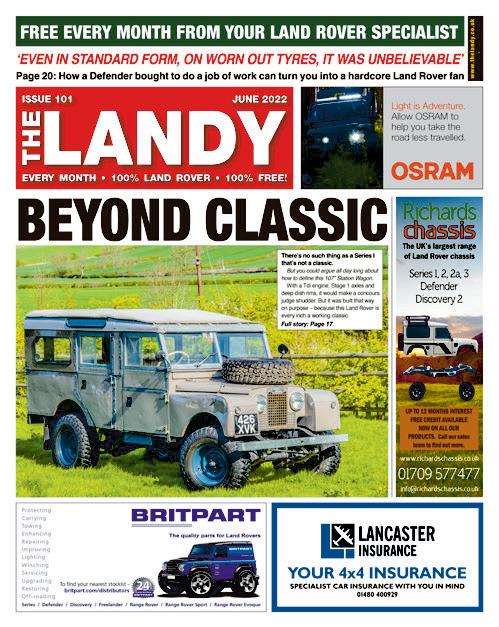

monster. As an all-rounder, at
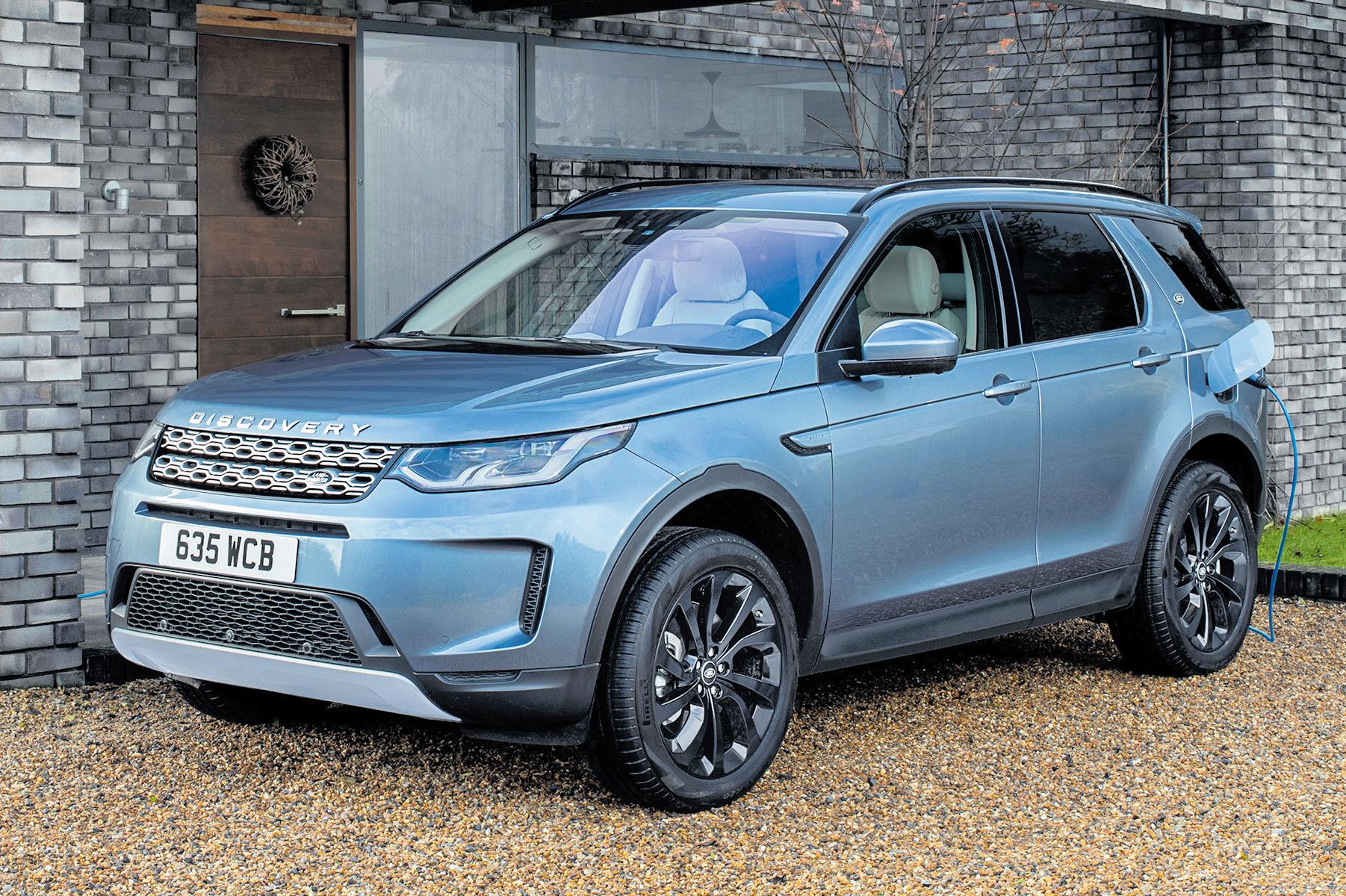
The second-generation Disco Sport came along only four years

launch it was the most capable Land Rover on sale – the new Defender will be going some to wrest that crown from it.
All the engines in the range are refined and flexible, and its chassis is remarkably supple for such a big vehicle. There’s no end of electronics working away in the background, but the effect is very
after the first. That’s because once again, it’s related to the Evoque, which was ready for a full new model in 2019.
The Sport is a premium midsized SUV with seven seats and a decent level of off-road ability. It’s a massively popular choice for the school run – and, with the arrival of a plug-in hybrid option last

handbrakes are big sources of woe, cam belts are a body-off job to change and rust is becoming more of an issue. Get a good one, though, and it’s all the car you’ll ever need.
Pros: Good at everything. Lots of accessories available now
Cons: As fragile as you expect, and then some
convincing – as is an interior that might make you wonder why you’d bother paying more for a Range Rover. Just be careful not to go wild with the options and end up paying more for a Discovery…
Pros: Immense blend of comfort and practicality
Cons: Feels more like a softroader than a proper Discovery
year, as a company car. Quality has taken a step up from the first model – it’s now a convincing premium vehicle, and the range offers enough choices to suit anybody with the means to buy one.
Pros: Classy and practical cabin, all-round good to drive
Cons: You can get a Defender for the price of some models
 The Velar a competent cruiser and has received numerous accolades
The Velar a competent cruiser and has received numerous accolades

Series IIA 88” 2.25 soft-top
Galv chassis. Refurbed bulkhead. Fairey overdrive. Recent resto. Refreshed engine, SIII box. New springs and steering box. Custom teak dash. £28,950. Rugby.
07801 566804 03/22/001

miles. New chassis, respray, Dynamat, new carpets and seats. New valves and injectors. Upgraded speakers.
Done to high standard. £55,000. Staffs. 01543 254507 04/24/005


Series IIA (1965). Originally a Carawagon. Restored last year with galv rear 1/4-chassis and many new body parts. New electrics, carb, fuel tank, rebuilt front axle. Heritage Cert. £16,995. Horsham. 07770 968944 03/22/002
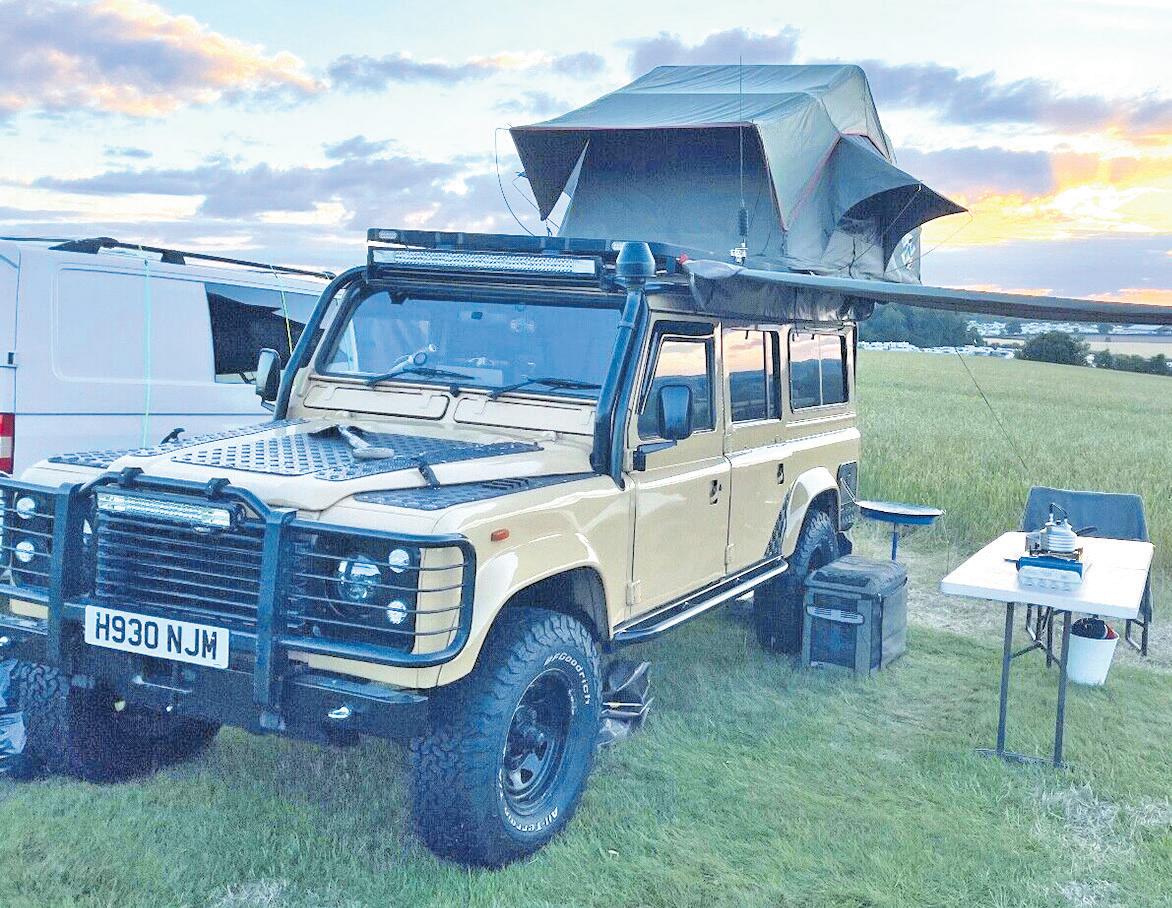
Defender 110 200Tdi Camper (1991). 74,000 miles. Roof tent and awning, solar panel, inverter, air compressor, fridge, double bed, fresh water tank, long-range fuel tank, lots more. £17,995. Lightwater. 07770 997569 04/24/008

Series III 109 (1977). 27,000 miles. Ex-Navy, restored to original on galv chassis in 2020. History from before and after disposal. 2.25 petrol. Heritage cert. Only 100 miles since resto. £18,500. Rugby. 07801 566804 13/23/004

Defender 110 300 Tdi CSW (1998). 161,000 miles. 12-Seater. Roof rack. Original chassis, new rear crossmember. Cubby box, all good seatbelts. Excellent tranny. History. MOT July. £13,500. Halesworth. 07564 911160 02/24/003


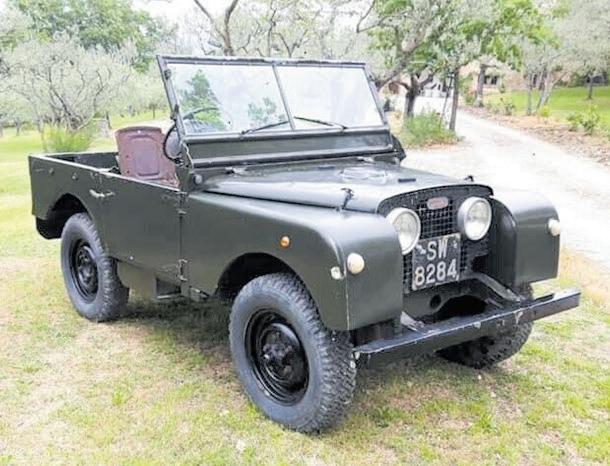
Series I (1950). Literal barn find in Italy. One owner before seller. Original chassis (needs work), correct engine,. Drives well. All docs to register in UK on original number. £12,750. Chelmsford. 07808 939796 13/23/006

Defender 90 200 Tdi (1991). 131,000 miles. SD cage, 2” lift, Cooper STTs, steel bumper, Superwinch X9, rock sliders, snorkel, steering guard. Raptor dash, frontfacing rear seats. £14,995. Swindon. 07765 043966 02/24/004

Defender 90 200 Tdi Hard-Top (1989). 192,928 kilometres. Steel bumper, snorkel, LED roof, work and fog lights, BFG ATs. Puma seats. Part service history. Well maintained. MOT June. £9500. East Grinstead. 07864 283836 02/24/005

Defender 110 Td5 DC (2002). 156,500 miles. New suspension, Dynamat, respray, BFGs on Boost alloys. Masai cream seat covers, wool carpets, suede headlining. Roof rack, ARB awning. £37,000. Staffs. 01543 254507 04/24/007


Series IIA 109 Pick-Up (1969). Very rare factory-approved Air Drive conversion with PTO-driven compressor. Signwritten with great patina. Original and complete vehicle for restoration. £3000. Evesham. 07507 934457 13/23/005

Defender 110 300Tdi HT (1989). 22,125 miles. 3 seats. Immaculate chassis and body. Dynamat, rear carpet, Disco transfer gears, roof rack. Masai seat covers, bumper, steps etc. Full MOT. £39,999. Staffs. 01543 254507 04/24/006
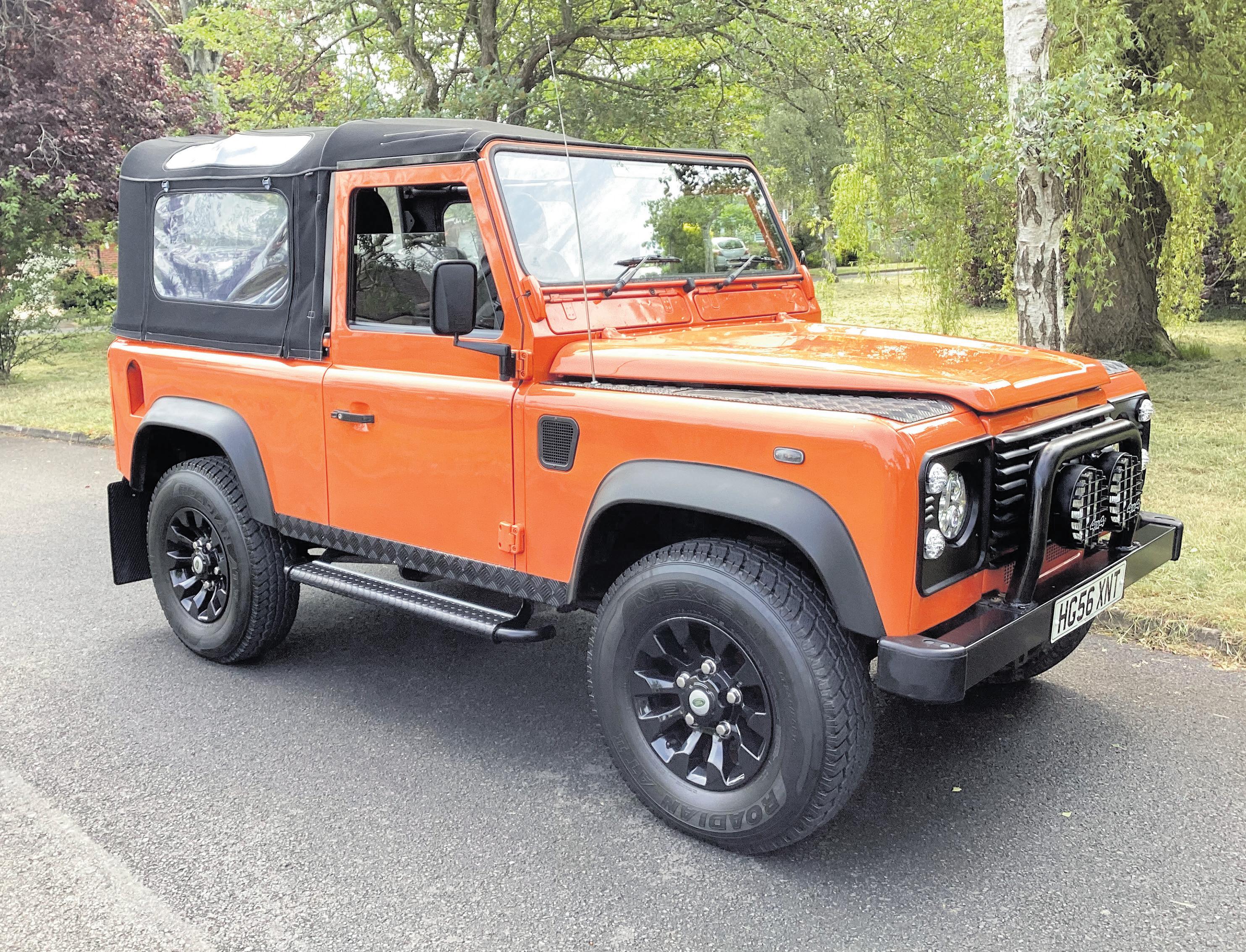
Defender 90 Td5 Soft-Top (2007). 146k miles. Auto. 6-seater. Tow pack, Sawtooths, CarPlay, reverse camera, cubby box, side runners, upgraded lights, electric windows, leather seats. £28,500. Bath. 01225 752358 01/24/001

Discovery






Discovery TD5 (2002). 195,000 miles. +2” suspension, mudterrains, snorkel, LEDs, HD front bumper. Stage 2 remap, EGR delete, side-exit








Every year, the Land Rover Yearbook brings together the best stories from the pages of The Landy and beyond. Lavishly illustrated and printed on high-quality gloss paper, it’s a bumper read – and great value at just £9.99!

Highlights of the 2024 Yearbook include…










• A stunning restored Series IIA reputed to have the most expensive paintwork ever applied to a Land Rover





















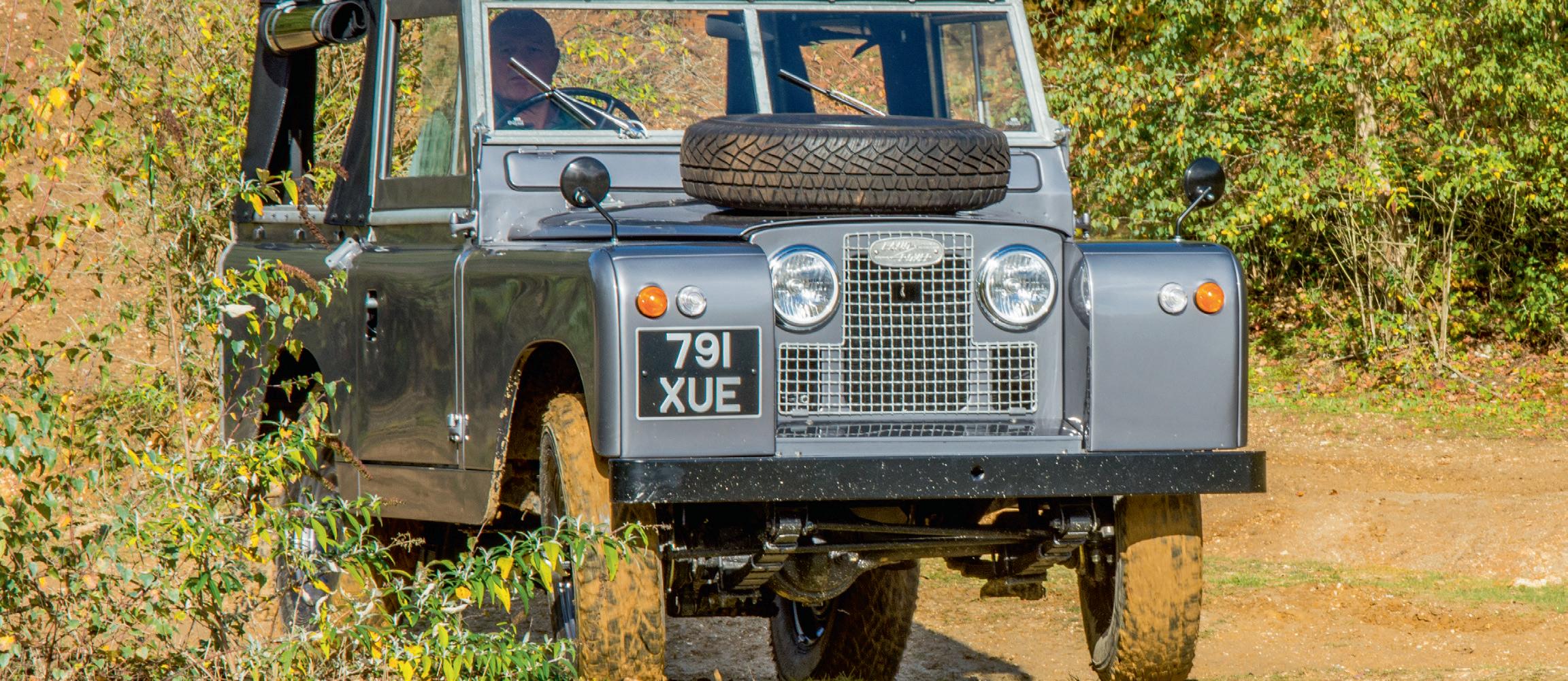














Sponsored by

• A 90 with the engine from a BMW – and the suspension from a Disco 2
• Two very different home-built overland 110s – and a stunning boutique 130 camper
• 11 pages of the latest and best parts, accessories and tools for every Land Rover
• One of the first 90s to get the best from air suspension
• Fitting a galvanised chassis in one of the country’s leading Land Rover workshops
























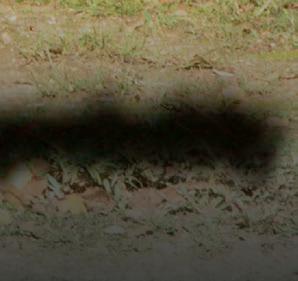




• A restified Range Rover with the sort of engine that makes a Rover V8 look tiny
• A roundup of the latest restorations, premium EV conversions and much more
• The biggest ever gathering of Land Rovers from behind the gates of the Royal household
• Exploring Europe in a whistle-stop Discovery expedition
• The trip of a lifetime reaches its conclusion as a pioneering Range Rover reaches Cape Town
• London to Liberia in the sort of Series III you’d normally treat as a restoration project









